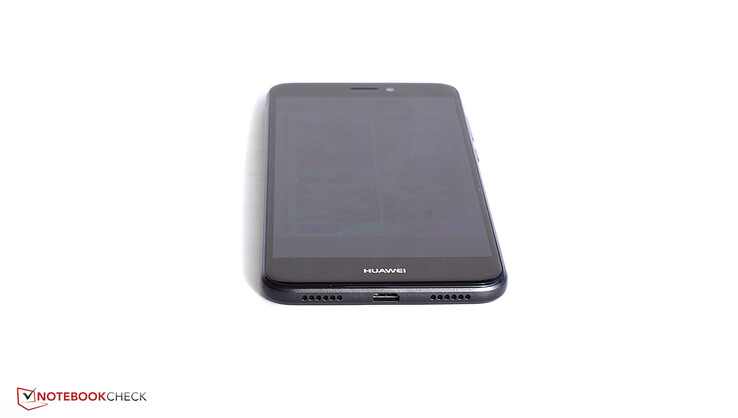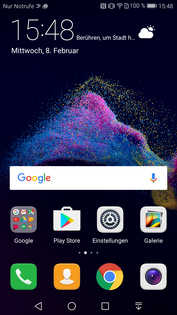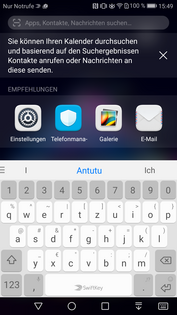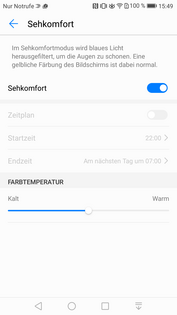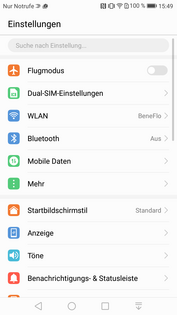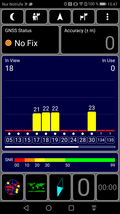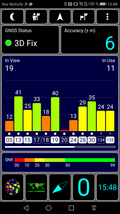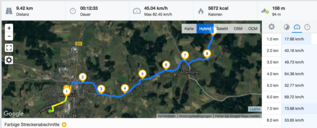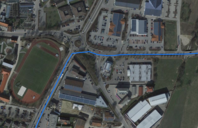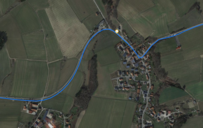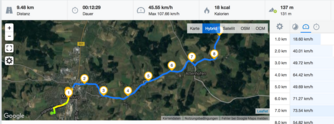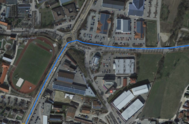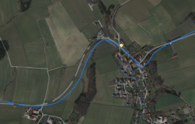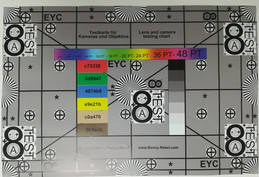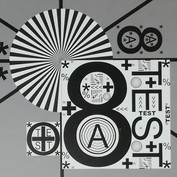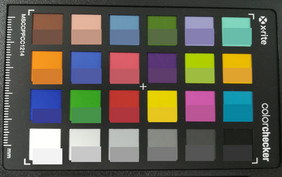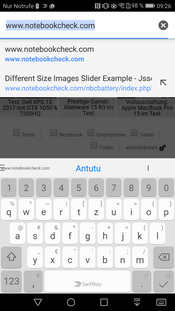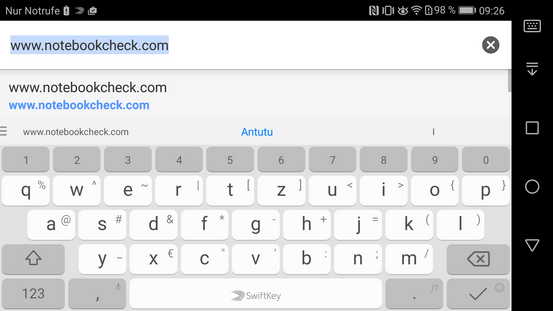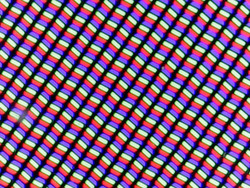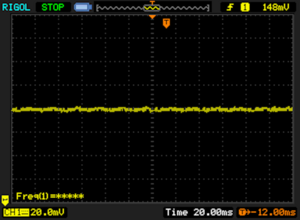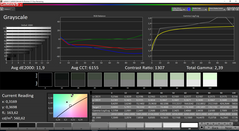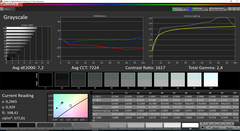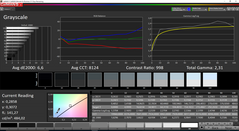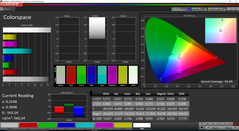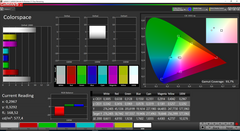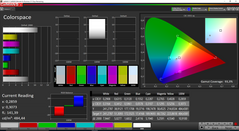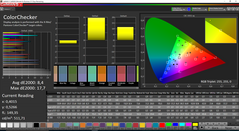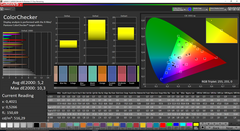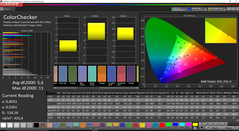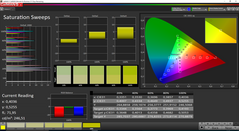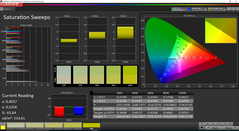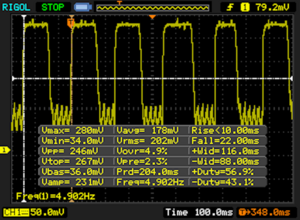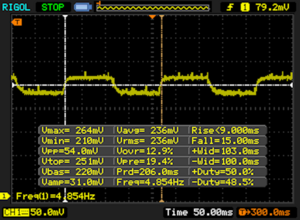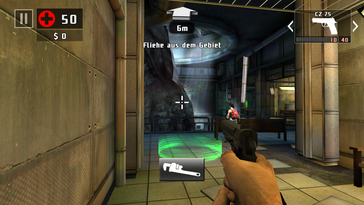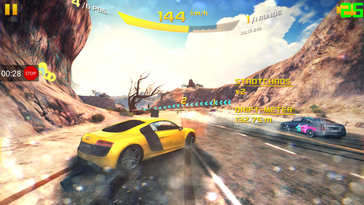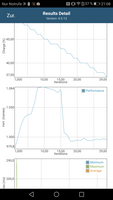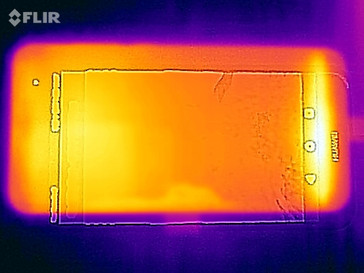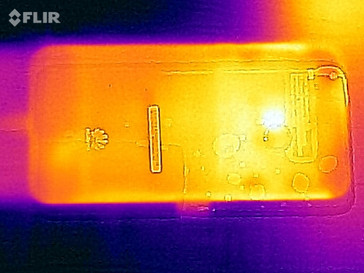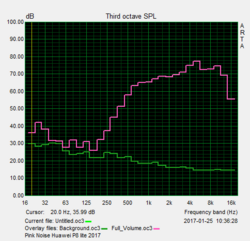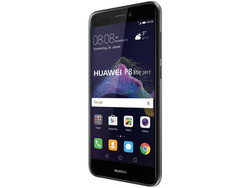Huawei P8 Lite 2017 Smartphone Review
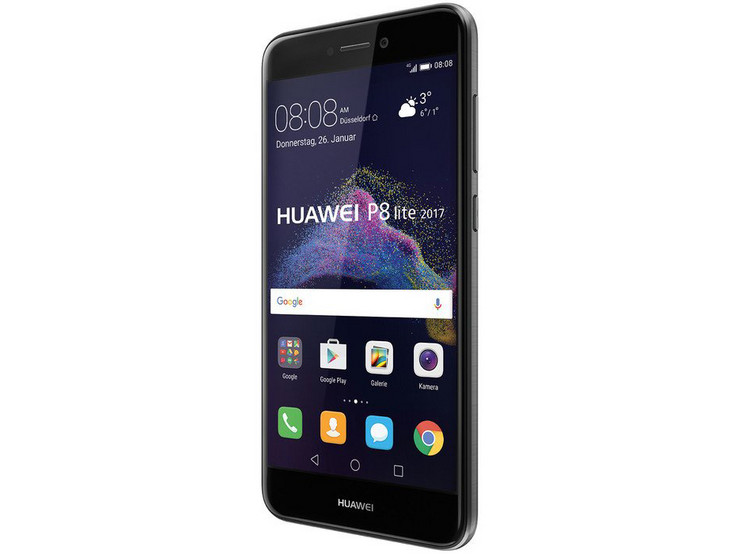
For the original German review, see here.
2015 was an eventful year: The spacecraft "New Horizons" reached Pluto, VW admitted that they had been dishonest about their diesel engines, Stefan Raab quit his TV career, and Huawei launched the P8 lite as a small, slimmed down version of its P8 flagship phone. Almost two years later both smartphones are still being retailed. Not a bad performance in this fast-paced market. Perhaps Huawei has decided to introduce a successor of the mid-range model in the form of the P8 lite (2017) just for this reason. It comes with a Full HD screen, 3 GB of RAM, and a much bigger battery, making it considerably more up-to-date than its predecessor. The phones also look very different. Only the recommended retail price of 240 Euros (~$255) for Huawei's P8 lite (2017) is very similar to that of its predecessor, and it is thus situated in the mid-range.
We compare the latest P8 lite with its predecessor alongside three other mid-range models: Asus' Zenfone 3 Max, HTC's One A9s, and Lenovo's ZUK Z2.
Case
As said, the casing of Huawei's P8 lite (2017) has been completely redesigned and has little in common with the P8 lite. Our review sample's design looks very organic thanks to the 2.5D glass on the front and the curved edges. The glossy glass back looks stylish and, like the front, it is difficult to keep clean: Fingerprints and dust accumulate quickly. Furthermore, the smartphone slides on even slightly slanted surfaces and could fall from a table accidentally. The smartphone is available in black, gold, and white. A blue model is mentioned on the website, but it does not seem to be available in Europe.
Huawei's P8 lite (2017) has a slightly bigger screen of 5.2 inches, and thus both the casing and the weight have increased. However, our present review sample is marginally slimmer than the 2015 P8 lite: We still measured 7.6 millimeters (~0.3 in) here.
Pressure on the screen is visible in the liquid crystals for a moment, but it does not leave prolonged pressure marks. The handset easily defies pressure on the back. Huawei's P8 lite (2017) can be warped slightly, which produces quiet cracking noises. In total, the casing makes a high-quality and solid impression. The selected glass and metal materials correspond to the category standard.
Connectivity
With 3 GB of working memory and 16 GB of storage, Huawei's P8 lite (2017) is up-to-date. However, some smartphones offer even higher storage capacities in this category. The USB port is not implemented in the USB-C format, and it only supports USB 2.0 speeds. At least it allows connecting external storage devices via USB OTG.
Two SIM cards can be inserted into Huawei's P8 lite (2017); a single-SIM version also exists on the market, but it is presently not available in Europe. The storage can be expanded by up to 128 GB via a micro-SD card but in favor of one SIM slot. Apps can be moved to the SD card although Huawei takes a different approach than some other manufacturers: Either the internal storage or the micro-SD card is selected as the standard storage. When the SD card is selected, data from compatible apps are moved to the SD card automatically and future apps, photos, and data are stored there. App2SD does not have to selected for every individual app. The card cannot be formatted as internal storage, and thus it can still be used with other devices.
Software
Huawei's Emotion UI 5 visibly modifies the looks of Android 7, but it is a bit more flexible than Google's stock Android: For example, the user can launch "Basic Mode" that facilitates use when large icons or only few functions are needed. It is also possible to decide whether all apps are displayed on the home screen or whether app drawers are used and arranged like the menu buttons. At first glance, the system makes a somewhat fragmented impression due to the small font size, but this can be changed in the settings and the text then becomes legible also for users with weaker eyesight. However, some app labels are cut off under the icon.
Thanks to the preloaded "HiCare" app, it is possible to quickly access Huawei's service offers or open instructions concerning the smartphone. "HiGame" contains some basic mobile games for downloading, and a phone manager provides security and cleaning features. Useful tools, such as a compass or file manager, are found in the tool folder. However, some affiliate apps, such as "Gameloft", "TripAdvisor", and "Twitter", are also preloaded.
Communication and GPS
Huawei's P8 lite (2017) offers relatively fast LTE Cat. 6 at a maximum download speed of 300 Mbit/s and maximum upload of 50 Mbit/s. Thanks to four GPRS, four UMTS, and five LTE frequencies, it should always be possible to find a network (at least in European countries). The reception within a rural area was usually good: We also usually had four of five bars indoors in the well-developed German Vodafone network. Conveniently, SIM cards can be inserted and removed on the fly.
The Wi-Fi standards are limited: Only 802.11 b/g/n are offered. Consequently, the less-frequented 5-GHz band cannot be used. HTC's One A9s provides a few more options, and Lenovo's ZUK Z2 that is difficult to acquire here even supports the high-speed 802.11 ac standard. Our review sample delivers acceptable though not outstanding Wi-Fi transmission rates, as we discovered in our standardized Wi-Fi test. It achieved a transmission speed of around 54 MBit/s in send and receive. HTC's One A9s, for example, offers twice the speed. The reception near the router was good in practice; websites opened relatively fast. Half the signal strength was still displayed at a distance of ten meters (~33 ft) and through three walls, but websites opened just as fast.
| Networking | |
| iperf3 transmit AX12 | |
| Lenovo ZUK Z2 | |
| HTC One A9s | |
| Huawei P8 lite 2017 | |
| Asus Zenfone 3 Max ZC520TL | |
| iperf3 receive AX12 | |
| Lenovo ZUK Z2 | |
| HTC One A9s | |
| Huawei P8 lite 2017 | |
| Asus Zenfone 3 Max ZC520TL | |
Huawei's P8 lite (2017) could not locate us indoors, but an accuracy of up to 5 meters (~16.4 ft) is quickly reached outdoors. We performed our practical tracking test, where we take the smartphone and a professional navigation system by Garmin, by car this time. We compared the outcomes of both devices with the "Runtastic" app.
The recorded route only deviates by 60 meters (~197 ft), which is a very good rate over almost ten kilometers (6.2 miles). The GPS module in Huawei's smartphone sometimes takes shortcuts when it loses the signal between two measuring points, but Garmin's Edge 500 navigation system does this, too. Huawei's module is even a bit better than the professional device on serpentine streets. In total, it is an impressive outcome for a GPS module in a mid-range smartphone. Consequently, the tracker can also be used for more demanding excursions.
Telephone and Call Quality
Huawei has actually reworked the phone app. However, it basically supports the same functions as Google's stock app. We liked the fact that the call list can be filtered according to categories, such as missed or unknown. The harassment filter is also a convenient tool for warding off unwanted calls.
The earpiece can get quite loud, but the higher its volume the less clear it becomes and it then starts to roar. We liked it most at medium volume although the call quality was also only mediocre then. The microphone had problems recording quiet voices and we also sounded muffled to our contact. Our contact sounded relatively good in hands-free mode, and the microphone can even record quieter speech. However, we still sounded a bit muffled to our contact.
Cameras
A small surprise: Huawei offers even fewer megapixels in its P8 lite (2017) primary camera than in its predecessor: now only 12 megapixels in contrast to 13 megapixels. However, this is not necessarily a step backward as Huawei relies on extra big pixels of 1.25 micrometers in order to capture more light. The autofocus also responds particularly quickly. We can confirm that the camera shoots well-exposed photos that still depict depth in both dark and bright areas, which is not a bad outcome. The outlines could be sharper; an intentionally blurred background often looks artificial. Subjectively, the primary camera definitely takes good photos for a mid-range smartphone in total.
Videos can be recorded in 1080p at 30 frames per second with the rear-facing camera. The exposure here is very good and adapts quickly to changing light conditions. The image sharpness is also good, and we quite like the results in total. A marginal note: The user has to take particular care not to cover the camera with a finger when holding the smartphone due to its position in the upper left corner.
The 8-megapixel, front-facing camera has a considerably higher resolution than Huawei's 2015 P8 lite. However, the photos are rather mediocre with visible color noise, bright areas quickly look overexposed, and they do not really look sharp. It should be acceptable for an occasional selfie, but it is not enough for really high-quality photos.
The analysis of the rear-facing camera also delivered good results under defined light conditions in our photo studio. Colored surfaces look relatively homogeneous and not too grainy. However, the sharpness decreases slightly toward the edges. The sharpness is good in the image center. Colors are reproduced well, but most tones are a bit too light compared to the reference color space.
Accessories and Warranty
Huawei's P8 lite (2017) comes with a charger, USB cable, and a SIM tool for opening the slot. A cabled headset is also included. Special accessories are not found on Huawei's website.
Huawei offers the 24-month manufacturer's warranty in the EU. Please see our Guarantees, Return Policies and Warranties FAQ for country-specific information.
Input Devices and Handling
Huawei preloads the third-party keyboard app "SwiftKey". Although it offers many configuration options, it is not very well-arranged since the keys often have multiple assignments. In return, the individual letters and numbers are mapped on large buttons. Voice input, swipe and a dictionary are also present.
The touchscreen has a very sleek surface and is thus very slippery. Whether or not the user likes it is a matter of taste. In any case, the touchscreen is very accurate and functions very precisely even in the corners. The menu keys are displayed on the screen. The volume control and standby button are on the casing's right as expected.
A highlight is certainly the fingerprint scanner. Although it has become standard in this price range, the fingerprint scanner in Huawei's P8 lite (2017) is extremely fast and accurate. The screen unlocks within fractions of a second after touching the area on the smartphone's back.
Display
The 16:9 screen in Huawei's P8 lite (2017) has a Full HD resolution that is not at all a matter of course in this price range. The IPS panel has a 5.2-inch size and an unusually high brightness of 559 cd/m². The illumination of 91 percent is also very homogeneous, and thus colored surfaces look evenly bright.
| |||||||||||||||||||||||||
Brightness Distribution: 91 %
Center on Battery: 575 cd/m²
Contrast: 1474:1 (Black: 0.39 cd/m²)
ΔE ColorChecker Calman: 5.2 | ∀{0.5-29.43 Ø4.79}
ΔE Greyscale Calman: 7.2 | ∀{0.09-98 Ø5}
93.7% sRGB (Calman 2D)
Gamma: 2.4
CCT: 7224 K
| Huawei P8 lite 2017 IPS, 1920x1080, 5.2" | Huawei P8 lite IPS, 1280x720, 5" | Asus Zenfone 3 Max ZC520TL IPS, 1280x720, 5.2" | HTC One A9s IPS, 1280x720, 5" | Lenovo ZUK Z2 IPS, 1920x1080, 5" | |
|---|---|---|---|---|---|
| Screen | -15% | -4% | 9% | -5% | |
| Brightness middle (cd/m²) | 575 | 365 -37% | 507 -12% | 348 -39% | 512 -11% |
| Brightness (cd/m²) | 559 | 353 -37% | 474 -15% | 320 -43% | 502 -10% |
| Brightness Distribution (%) | 91 | 93 2% | 85 -7% | 85 -7% | 84 -8% |
| Black Level * (cd/m²) | 0.39 | 0.42 -8% | 0.53 -36% | 0.23 41% | 0.58 -49% |
| Contrast (:1) | 1474 | 869 -41% | 957 -35% | 1513 3% | 883 -40% |
| Colorchecker dE 2000 * | 5.2 | 5.2 -0% | 4.7 10% | 3.5 33% | 3.8 27% |
| Colorchecker dE 2000 max. * | 10.3 | 7.2 30% | 6.4 38% | 11.2 -9% | |
| Greyscale dE 2000 * | 7.2 | 5.85 19% | 4.8 33% | 4 44% | 2.7 62% |
| Gamma | 2.4 92% | 2.17 101% | 2.25 98% | 2.3 96% | 2.09 105% |
| CCT | 7224 90% | 7252 90% | 6441 101% | 6527 100% | 6076 107% |
| Color Space (Percent of AdobeRGB 1998) (%) | 70.86 | ||||
| Color Space (Percent of sRGB) (%) | 91.25 |
* ... smaller is better
Screen Flickering / PWM (Pulse-Width Modulation)
| Screen flickering / PWM not detected | |||
In comparison: 53 % of all tested devices do not use PWM to dim the display. If PWM was detected, an average of 8167 (minimum: 5 - maximum: 343500) Hz was measured. | |||
Although the black level of 0.38 cd/m² is not a top rate, it is still better than in most comparison devices. Dark areas have a light grayish tint. The contrast ratio of 1474:1 is nevertheless very good thanks to the high brightness, and colors thus look fairly vivid. The screen has a blue filter mode that reduces eyestrain. This is achieved via the white balance that can also be readjusted manually. This is recommended since the image looks very yellowish otherwise.
We examine the image reproduction ex-factory, and in the cool and warm white balance with the CalMAN software and spectrophotometer. A color tint is always present; the white balance only changes the color. The tint is green in a very warm white balance and blue in a very cool setting. The default setting exhibits the lowest color deviations compared to the sRGB color space. Depending on the setting, the sRGB color space is covered from 93.3 to 93.7 percent. This will be too little for professionals especially since the color tint cannot be completely eliminated. Normal users should not depend too much on the screen's colors, either.
Display Response Times
| ↔ Response Time Black to White | ||
|---|---|---|
| 32 ms ... rise ↗ and fall ↘ combined | ↗ 10 ms rise | |
| ↘ 22 ms fall | ||
| The screen shows slow response rates in our tests and will be unsatisfactory for gamers. In comparison, all tested devices range from 0.1 (minimum) to 240 (maximum) ms. » 85 % of all devices are better. This means that the measured response time is worse than the average of all tested devices (20.3 ms). | ||
| ↔ Response Time 50% Grey to 80% Grey | ||
| 24 ms ... rise ↗ and fall ↘ combined | ↗ 9 ms rise | |
| ↘ 15 ms fall | ||
| The screen shows good response rates in our tests, but may be too slow for competitive gamers. In comparison, all tested devices range from 0.165 (minimum) to 636 (maximum) ms. » 33 % of all devices are better. This means that the measured response time is better than the average of all tested devices (31.7 ms). | ||
The screen's very high maximum brightness allows using the smartphone outdoors on brighter days. However, the glossy screen is often an annoyance here. The viewing angles are very good; the images on the screen are still very clear even from a very flat angle.
Performance
HiSilicon's Kirin 655 is the installed SoC. It has a considerably higher clock rate than the Kirin 620 in the predecessor and is a variant of the Kirin 650 with a slightly higher clock rate in one of the processor's two clusters. They consist of four cores each and clock at a maximum of 1.7 GHz and 2.1 GHz. The SoC supports 64 bits and belongs to the mid-range. Compared with the predecessor, its performance has been notably increased from 20 to 50 percent depending on the benchmark. Huawei's P8 lite (2017) is also quite fast compared with comparable modern smartphones.
An ARM Mali-T830 MP2 graphics chip that clocks at 900 MHz is installed. It also offers performance rates that are at least equal to those of current mid-range smartphones, and which are sometimes even much higher.
| AnTuTu v6 - Total Score (sort by value) | |
| Huawei P8 lite 2017 | |
| Asus Zenfone 3 Max ZC520TL | |
| HTC One A9s | |
| Lenovo ZUK Z2 | |
| Geekbench 4.0 | |
| 64 Bit Single-Core Score (sort by value) | |
| Huawei P8 lite 2017 | |
| Asus Zenfone 3 Max ZC520TL | |
| HTC One A9s | |
| 64 Bit Multi-Core Score (sort by value) | |
| Huawei P8 lite 2017 | |
| Asus Zenfone 3 Max ZC520TL | |
| HTC One A9s | |
| GFXBench (DX / GLBenchmark) 2.7 | |
| T-Rex Onscreen (sort by value) | |
| Huawei P8 lite 2017 | |
| Huawei P8 lite | |
| Asus Zenfone 3 Max ZC520TL | |
| HTC One A9s | |
| Lenovo ZUK Z2 | |
| 1920x1080 T-Rex Offscreen (sort by value) | |
| Huawei P8 lite 2017 | |
| Huawei P8 lite | |
| Asus Zenfone 3 Max ZC520TL | |
| HTC One A9s | |
| Lenovo ZUK Z2 | |
| GFXBench 3.0 | |
| on screen Manhattan Onscreen OGL (sort by value) | |
| Huawei P8 lite 2017 | |
| Asus Zenfone 3 Max ZC520TL | |
| HTC One A9s | |
| Lenovo ZUK Z2 | |
| 1920x1080 1080p Manhattan Offscreen (sort by value) | |
| Huawei P8 lite 2017 | |
| Asus Zenfone 3 Max ZC520TL | |
| HTC One A9s | |
| Lenovo ZUK Z2 | |
| GFXBench 3.1 | |
| on screen Manhattan ES 3.1 Onscreen (sort by value) | |
| Huawei P8 lite 2017 | |
| Asus Zenfone 3 Max ZC520TL | |
| HTC One A9s | |
| Lenovo ZUK Z2 | |
| 1920x1080 Manhattan ES 3.1 Offscreen (sort by value) | |
| Huawei P8 lite 2017 | |
| Asus Zenfone 3 Max ZC520TL | |
| HTC One A9s | |
| Lenovo ZUK Z2 | |
| PCMark for Android - Work performance score (sort by value) | |
| Huawei P8 lite 2017 | |
| Huawei P8 lite | |
| Asus Zenfone 3 Max ZC520TL | |
| HTC One A9s | |
| Lenovo ZUK Z2 | |
The Internet browsing performance of Huawei's P8 lite (2017) is also very fast - at least in the category comparison. Huawei's smartphone is on par with HTC's One A9s, and Lenovo's ZUK Z2 is naturally even faster thanks to its upper-range SoC. In any case, sophisticated HTML5 pages and animations run quite smoothly on Huawei's P8 lite (2017).
| Mozilla Kraken 1.1 - Total (sort by value) | |
| Huawei P8 lite 2017 | |
| Huawei P8 lite | |
| Asus Zenfone 3 Max ZC520TL | |
| HTC One A9s | |
| Lenovo ZUK Z2 | |
| Octane V2 - Total Score (sort by value) | |
| Huawei P8 lite 2017 | |
| Huawei P8 lite | |
| Asus Zenfone 3 Max ZC520TL | |
| HTC One A9s | |
| Lenovo ZUK Z2 | |
| WebXPRT 2015 - Overall (sort by value) | |
| Huawei P8 lite 2017 | |
| Huawei P8 lite | |
| Asus Zenfone 3 Max ZC520TL | |
| HTC One A9s | |
| JetStream 1.1 - Total Score (sort by value) | |
| Huawei P8 lite 2017 | |
| Asus Zenfone 3 Max ZC520TL | |
| HTC One A9s | |
| Lenovo ZUK Z2 | |
* ... smaller is better
Accessing an inserted micro-SD card was faster than with the comparison devices in our test, at least according to the tests performed with our Toshiba reference card. High-end smartphones, such as Samsung's Galaxy S7 Edge, achieve considerably more with the micro-SD card.
Accessing the internal storage was also quickly possible in the category comparison. No matter whether write or read, the Huawei's P8 lite (2017) scored well and even placed itself clearly before Lenovo's ZUK Z2 in random access.
| AndroBench 3-5 | |
| Sequential Read 256KB (sort by value) | |
| Huawei P8 lite 2017 | |
| Huawei P8 lite | |
| Asus Zenfone 3 Max ZC520TL | |
| HTC One A9s | |
| Lenovo ZUK Z2 | |
| Sequential Write 256KB (sort by value) | |
| Huawei P8 lite 2017 | |
| Huawei P8 lite | |
| Asus Zenfone 3 Max ZC520TL | |
| HTC One A9s | |
| Lenovo ZUK Z2 | |
| Random Read 4KB (sort by value) | |
| Huawei P8 lite 2017 | |
| Huawei P8 lite | |
| Asus Zenfone 3 Max ZC520TL | |
| HTC One A9s | |
| Lenovo ZUK Z2 | |
| Random Write 4KB (sort by value) | |
| Huawei P8 lite 2017 | |
| Huawei P8 lite | |
| Asus Zenfone 3 Max ZC520TL | |
| HTC One A9s | |
| Lenovo ZUK Z2 | |
| Sequential Read 256KB SDCard (sort by value) | |
| Huawei P8 lite 2017 | |
| Asus Zenfone 3 Max ZC520TL | |
| HTC One A9s | |
| Sequential Write 256KB SDCard (sort by value) | |
| Huawei P8 lite 2017 | |
| Asus Zenfone 3 Max ZC520TL | |
| HTC One A9s | |
Games
The app "GameBench" helps us determine the frame rates in order to see just how smooth games run on the review sample. We discovered smooth frame rates are not always possible with very high details in demanding games. In "Asphalt 8", a fast-pace racing game, the details had to be lowered for achieving 30 frames per second. Slight performance drops that reduced the average frame rate to 29 frames were recorded in "Dead Trigger 2". We did not record more than 30 frames per second in the test. The manufacturer has apparently set a limit. Of course, performance problems were not observed in basic games, such as "Angry Birds".
Navigation via touchscreen and position sensor functioned very reliably.
| Asphalt 8: Airborne | |||
| Settings | Value | ||
| high | 25 fps | ||
| very low | 30 fps | ||
| Dead Trigger 2 | |||
| Settings | Value | ||
| high | 29 fps | ||
Emissions
Temperature
We did not feel a real temperature increase on the review sample even during full load. The handset always remained cool and only reached a maximum of 33 °C (91.4 °F) on the back during prolonged load. The idle temperatures were only marginally lower.
The performance remained stable after repeated load as our test with GFXBench battery test shows: The same sequence is rendered thirty times in succession here. The frame rates of the first runs are very low. Then they increase and settle to a higher rate than at initiation. In total, it can be said that the performance can vary but this does not seem due to the system's temperature. The performance fluctuations of almost 10 percent are not tremendous anyway.
(+) The maximum temperature on the upper side is 33 °C / 91 F, compared to the average of 35.2 °C / 95 F, ranging from 21.9 to 247 °C for the class Smartphone.
(+) The bottom heats up to a maximum of 31.9 °C / 89 F, compared to the average of 34 °C / 93 F
(+) In idle usage, the average temperature for the upper side is 29.5 °C / 85 F, compared to the device average of 32.9 °C / 91 F.
Speaker
The small speaker on the lower edge is relatively loud. However, music sounds a bit tinny at maximum volume. Not much bass is audible, but songs and voices in videos sound good, which could be due to the well-balanced mid-range. The sound at medium volume is relatively good and clearer than at maximum volume. The speaker's sound quality reminds us of that in Huawei's former P8 lite in total.
Audio playback via both the 3.5-mm jack and Bluetooth is good.
Huawei P8 lite 2017 audio analysis
(+) | speakers can play relatively loud (83.6 dB)
Bass 100 - 315 Hz
(-) | nearly no bass - on average 32.1% lower than median
(±) | linearity of bass is average (11.2% delta to prev. frequency)
Mids 400 - 2000 Hz
(+) | balanced mids - only 4% away from median
(+) | mids are linear (6.4% delta to prev. frequency)
Highs 2 - 16 kHz
(±) | higher highs - on average 7.9% higher than median
(+) | highs are linear (4.8% delta to prev. frequency)
Overall 100 - 16.000 Hz
(±) | linearity of overall sound is average (27.6% difference to median)
Compared to same class
» 71% of all tested devices in this class were better, 5% similar, 24% worse
» The best had a delta of 12%, average was 35%, worst was 134%
Compared to all devices tested
» 84% of all tested devices were better, 3% similar, 13% worse
» The best had a delta of 4%, average was 24%, worst was 134%
Asus Zenfone 3 Max ZC520TL audio analysis
(+) | speakers can play relatively loud (88 dB)
Bass 100 - 315 Hz
(-) | nearly no bass - on average 37.7% lower than median
(±) | linearity of bass is average (9.6% delta to prev. frequency)
Mids 400 - 2000 Hz
(±) | reduced mids - on average 9.7% lower than median
(±) | linearity of mids is average (9.4% delta to prev. frequency)
Highs 2 - 16 kHz
(±) | higher highs - on average 7.6% higher than median
(+) | highs are linear (3.3% delta to prev. frequency)
Overall 100 - 16.000 Hz
(-) | overall sound is not linear (30.7% difference to median)
Compared to same class
» 79% of all tested devices in this class were better, 4% similar, 18% worse
» The best had a delta of 12%, average was 35%, worst was 134%
Compared to all devices tested
» 89% of all tested devices were better, 3% similar, 9% worse
» The best had a delta of 4%, average was 24%, worst was 134%
Frequency diagram in comparison (checkboxes above can be turned on/off!)
Energy Management
Power Consumption
The high standby consumption rate shocked us at first. Huawei's P8 lite (2017) allegedly consumes 0.82 watts, which means that the battery would be depleted in almost 14 hours when it is just idling. We can, however, give the all clear here: The battery capacity only reduced slightly even after a few days on the table. It is apparently an error in measurement.
Otherwise, the consumption rates, especially while idling, i.e. without explicit load, are relatively high in the category comparison. The Zenfone 3 Max, for example, is considerably more frugal here. This might also be due to the higher resolution screen in Huawei's P8 lite (2017). The manufacturer provides the option of reducing the resolution for saving energy when desired.
Then again, our review sample is more restrained during load and is almost frugal compared with other devices in this category. Thus, it depends on how the smartphone is used: When it is often idle, it will consume more power than the comparison devices, but the user will find a more energy-saving handset when games or similarly demanding tasks are performed.
| Off / Standby | |
| Idle | |
| Load |
|
Key:
min: | |
| Huawei P8 lite 2017 3000 mAh | Huawei P8 lite mAh | Asus Zenfone 3 Max ZC520TL 4100 mAh | HTC One A9s 2300 mAh | Lenovo ZUK Z2 3500 mAh | |
|---|---|---|---|---|---|
| Power Consumption | 6% | 11% | 7% | 4% | |
| Idle Minimum * (Watt) | 1.44 | 1.4 3% | 0.74 49% | 1.29 10% | 1.31 9% |
| Idle Average * (Watt) | 2.47 | 2.3 7% | 2.04 17% | 2.28 8% | 2.03 18% |
| Idle Maximum * (Watt) | 2.58 | 2.5 3% | 2.22 14% | 2.52 2% | 2.08 19% |
| Load Average * (Watt) | 4.55 | 3.9 14% | 5.57 -22% | 4.06 11% | 5.45 -20% |
| Load Maximum * (Watt) | 6.3 | 6 5% | 6.59 -5% | 5.91 6% | 6.75 -7% |
* ... smaller is better
Battery Runtime
Compared with the predecessor, the battery capacity has been increased considerably to now 3000 mAh or 11.4 Wh. Huawei's P8 lite (2017) thus achieves a much longer battery life than its predecessor. The user can browse the Internet via Wi-Fi for a bit over 10 hours, which is a good rate that most comparison devices do not achieve. Only Asus' Zenfone 3 Max with its gigantic battery can outrun the review sample. 4:43 hours of load are a very impressive rate for Huawei's P8 lite (2017).
Two normal workdays are possible. The handset will only have to be recharged daily when used very often or intensely. Unfortunately, Quick Charge is not supported and recharging a completely drained battery takes quite a long time with almost 3 hours.
| Huawei P8 lite 2017 3000 mAh | Huawei P8 lite mAh | Asus Zenfone 3 Max ZC520TL 4100 mAh | HTC One A9s 2300 mAh | Lenovo ZUK Z2 3500 mAh | |
|---|---|---|---|---|---|
| Battery runtime | -41% | 21% | -5% | -10% | |
| Reader / Idle (h) | 22.1 | 11.9 -46% | 24.4 10% | 25.7 16% | |
| H.264 (h) | 10.7 | 6.2 -42% | 14.1 32% | 9.8 -8% | |
| WiFi v1.3 (h) | 10.1 | 5.9 -42% | 13.6 35% | 8.6 -15% | 9.1 -10% |
| Load (h) | 4.7 | 3.2 -32% | 5 6% | 4.1 -13% |
Pros
Cons
Verdict
Although the decision to reiterate the slimmed version of the former flagship is unusual, the manufacturer has created more than just a competitive mid-range smartphone with the Huawei P8 lite (2017). Our review sample surpasses its predecessor, the Huawei P8 lite, in many aspects and can even compete with more expensive devices in some sectors. First to be mentioned would be the very fast and accurate fingerprint scanner that is hardly found otherwise in a 250 Euro (~$264) device. The screen has a higher resolution than common in this category, but without much of an impact on battery life: Two workdays without recharging are quite easily possible in practice. The smartphone's performance is good and the handset hardly heats up at the same time.
The call quality is only mediocre, and the speaker will hardly convince a real music fan. The bright and low-contrast screen unfortunately has a visible color tint, and recharging takes a very long time. The casing is too slippery for slanted surfaces and the smartphone could fall to the ground.
Huawei introduces an overall successful update of its mid-range smartphone with the P8 lite (2017). It was worthwhile to take this unusual approach and reconfigure the almost forgotten smartphone with a better screen, good battery life, and a considerable performance boost.
Huawei makes up for the smartphone's shortcomings with the aforementioned plus points alongside a very accurate GPS module and decent configuration. Thus, we give Huawei's P8 lite (2017) a purchase recommendation.
Huawei P8 lite 2017
- 02/13/2017 v6 (old)
Florian Wimmer




